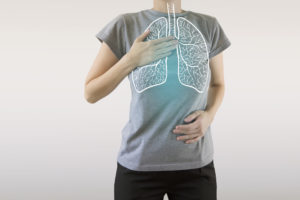
But breathing can do a lot more than get you refocused and calm. It has the potential to help manage symptoms of irritable bowel syndrome (IBS), reduce heart rate, control stress, and help with chronic obstructive pulmonary disease (COPD).
Of course, any old breathing won’t do the trick. Most people take shallow breaths—called chest breathing—without engaging the diaphragm. Your diaphragm is a small sheet of muscle that helps you breathe. However, most people rarely engage it. But when you do, good things happen.
Diaphragmatic breathing (also called abdominal or “belly breathing”) allows air to get deep into your lungs and encourages what’s known as a “full oxygen exchange.” This type of breathing involves bringing plenty of oxygen into the lungs during inhalation (when it contracts) and pushing out carbon dioxide during the exhale.
This type of breathing strengthens the diaphragm and has a number of benefits, including a lower heart rate. But people with COPD may get the most from it.
COPD can weaken the diaphragm and trap air, but this type of breathing can strengthen the muscles to encourage easier and more efficient breathing. This may help prevent shortness of breath.
You can strengthen your diaphragm by practicing abdominal breathing. Here’s how:
- Lie on your back on a flat surface with knees bent.
- Place one hand on your upper chest and the other on your belly, just below the rib cage.
- Breathe in slowly through your nose, letting the air in deep towards your belly. The hand on your chest should remain still, the one on your belly should move up.
- Tighten your abdominal muscles and let the fall as you exhale through your mouth. Hand on belly should move back down to the starting position.
Practice every day so it becomes second nature.
When you learn how to regularly use diaphragm breathing, you’ll have a quick tool to help address stress, a racing heart, and shortness of breath. Use this technique to help with a host of health ailments.